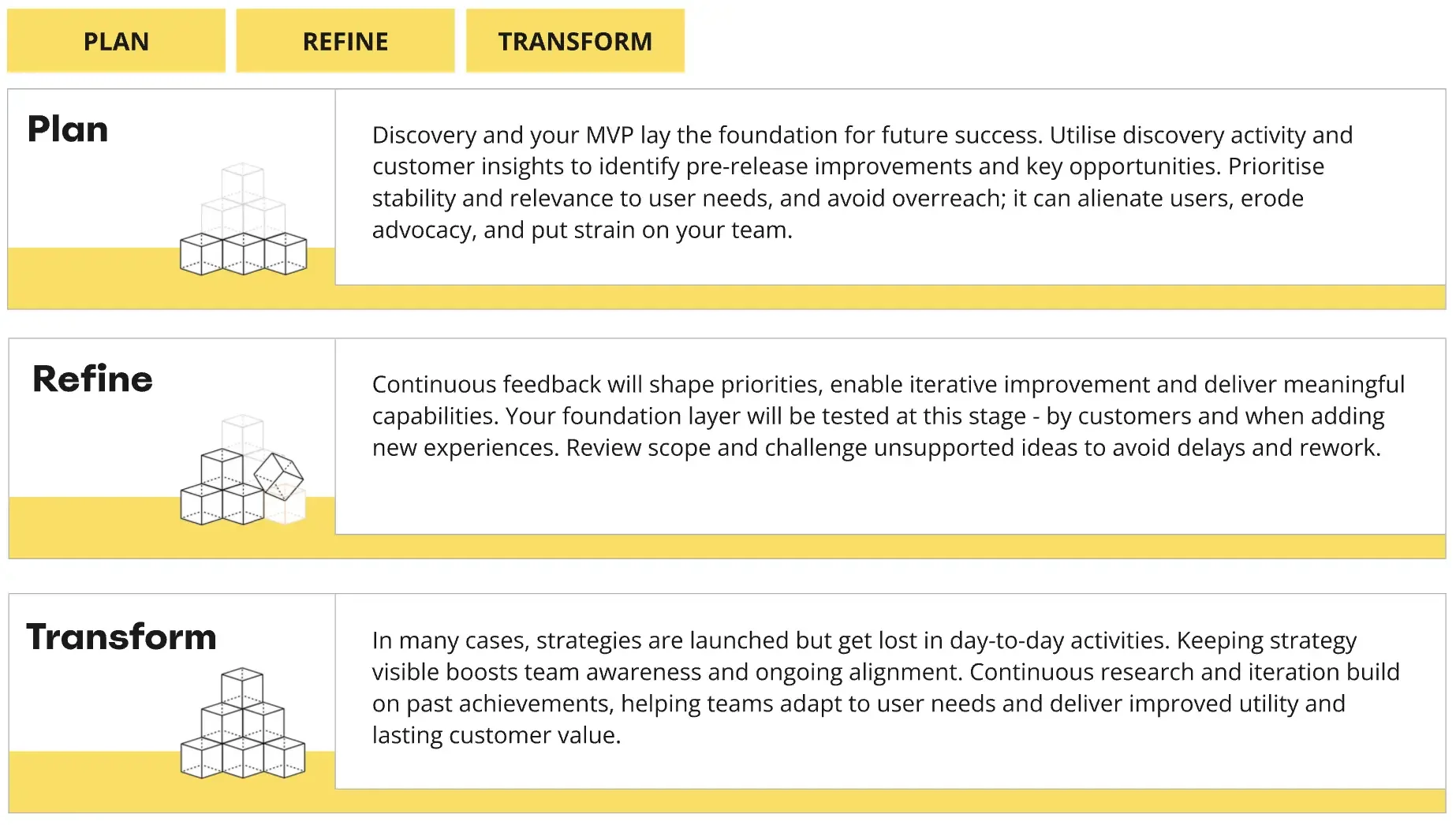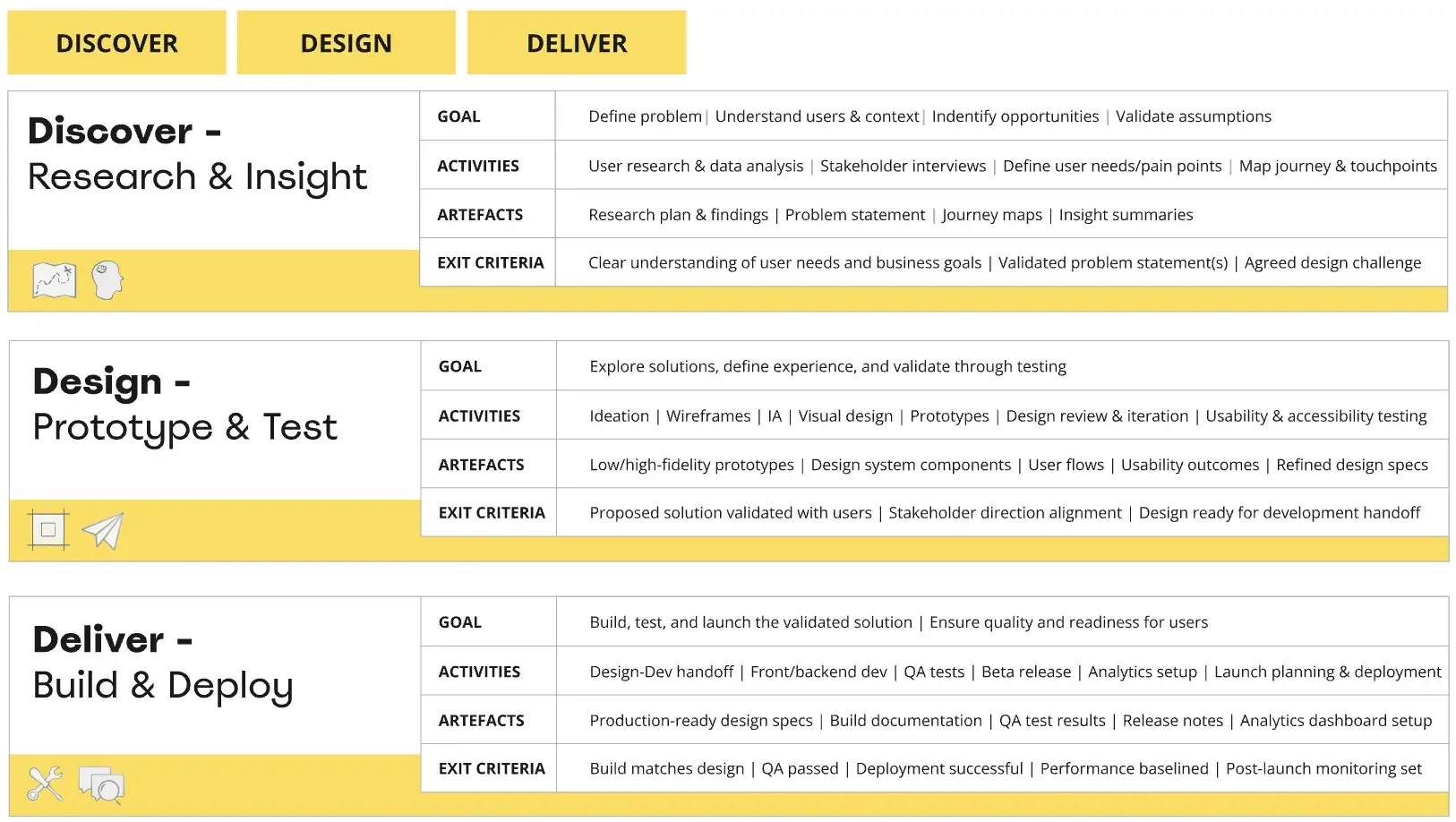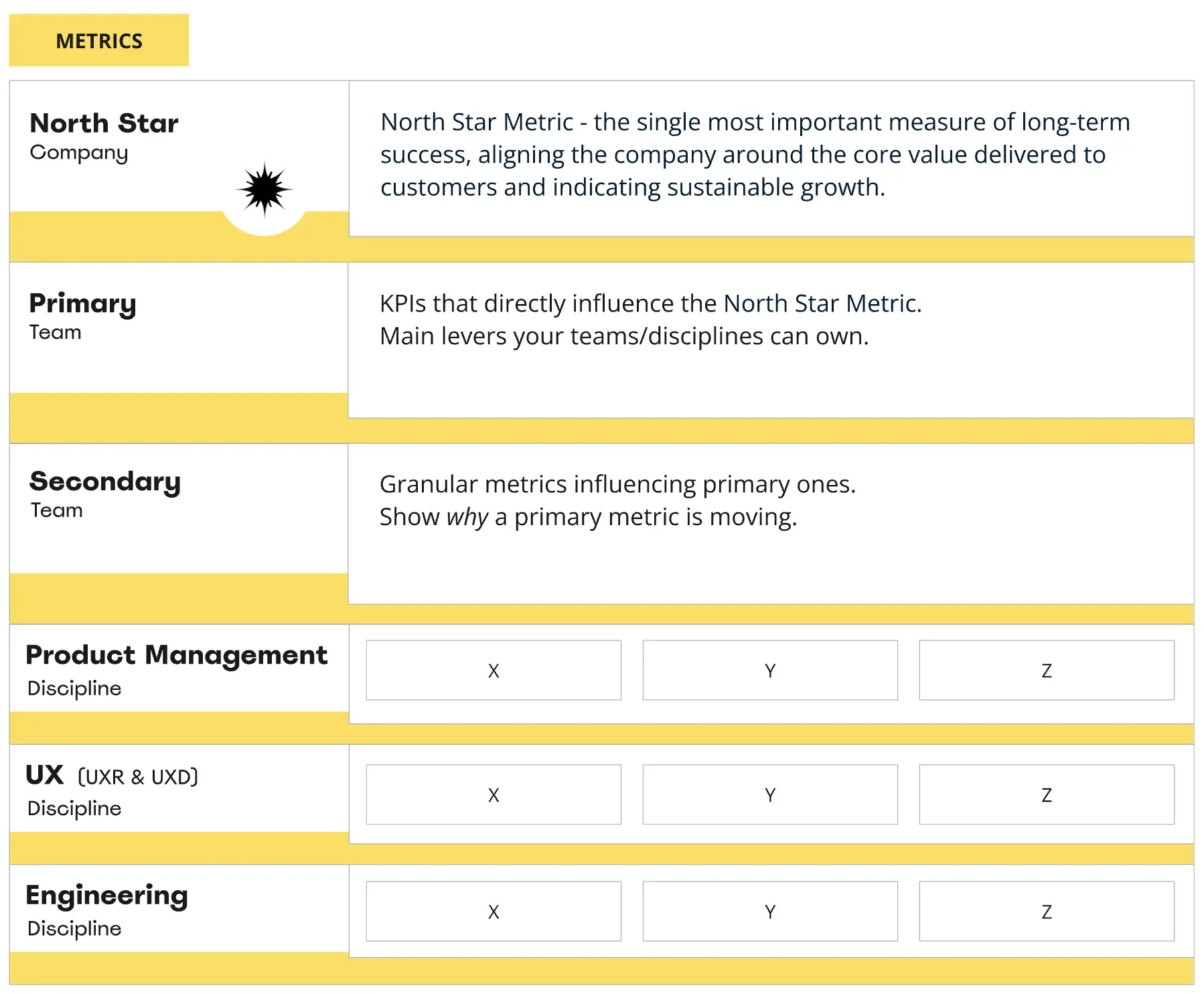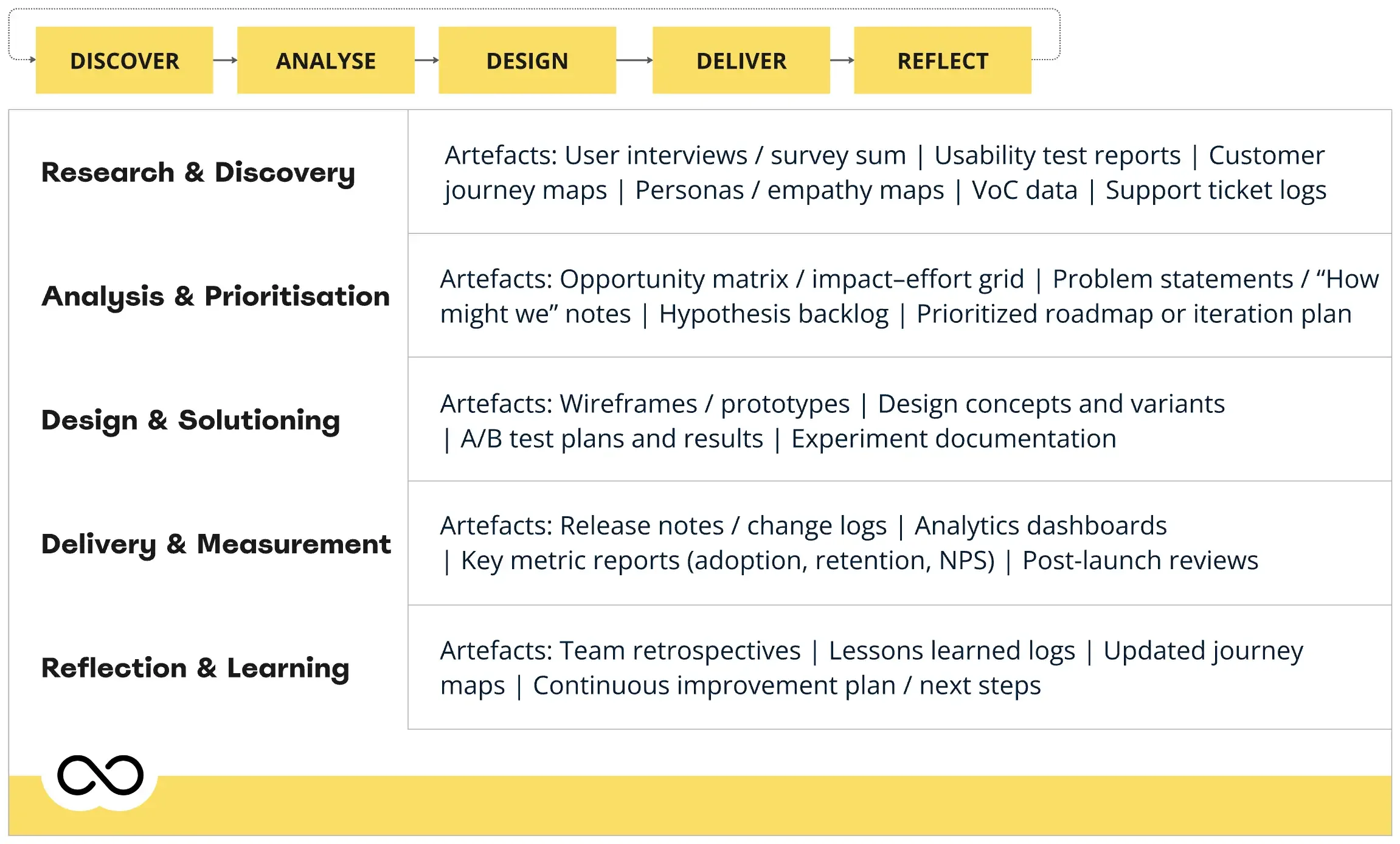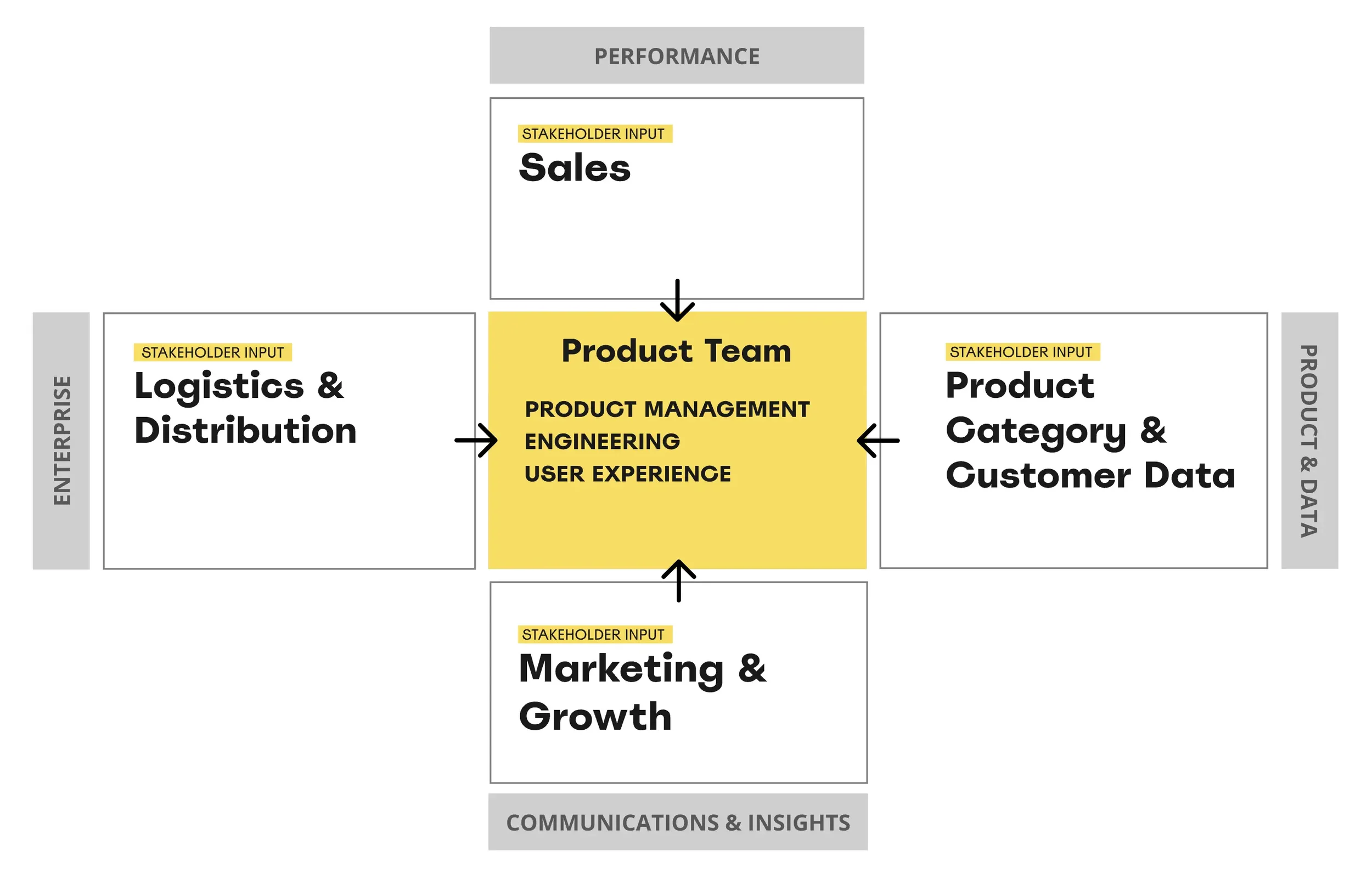Achievements summary
Product strategy and operations thrive on openness to change, supported by leadership and strong team alignment. Meaningful change happens gradually, as processes are reviewed, assessed, and refined for impact.
Below are previous strategies and frameworks.
These are tailored to people, disciplines and structures in each unique environment.
Leadership & Strategy
Built and scaled multidisciplinary design teams across UX, Research, UI, Content, and DesignOps — embedding design within agile product environments.
Redefined design’s role from delivery to strategic influence — ensuring design shaped product direction, not just outcomes.
Partnered with Product and Engineering leadership to align design strategy with company OKRs and long-term vision.
Implemented design governance frameworks, defining scalable processes, research frameworks, and design systems for consistency and efficiency.
Leadership & Strategy
Built and scaled multidisciplinary design teams across UX, Research, UI, Content, and DesignOps — embedding design within agile product environments.
Redefined design’s role from delivery to strategic influence — ensuring design shaped product direction, not just outcomes.
Partnered with Product and Engineering leadership to align design strategy with company OKRs and long-term vision.
Implemented design governance frameworks, defining scalable processes, research frameworks, and design systems for consistency and efficiency.
Customer Experience & Impact
Directed UX strategy for a global digital transformation supporting 100k+ products and 700k researchers in 130 countries.
Delivered measurable outcomes:
+30% increase in search-to-product engagement
-7% reduction in zero-result searches
+2.8M additional sessions per year
Member of product leadership team supporting £450M revenue
Simplified end-to-end e-commerce journeys, reducing friction and improving clarity across nine global product categories.
Advocated accessibility, usability, and performance standards to drive inclusive and high-quality design delivery.
Balanced teams for scalable product delivery
Getting the right mix and ratio across disciplines. Product and Engineering verticals, supported by UX horizontals, forming the foundation for structured and efficient Agile ways of working.
Product frameworks
Simplifying existing frameworks to fit the team in place. Recognising that out-of-the-box models rarely align perfectly, applying them pragmatically to suit the team’s capabilities and maturity.
Metric framework
Simple: An uncomplicated metric framework focused on clarity and alignment
Limited metrics: A concise set of measures that maintains focus and improves adoption
Actionable: Metrics that clearly show how team activity influences results
Aligned: Each metric laddering up to the North Star Metric
Guiding: Metrics that support prioritisation and data-informed product decisions
Shared understanding: Ensuring everyone works toward common goals
Example metric framework showing how team and discipline-level measures ladder up to the North Star Metric, helping teams connect day-to-day activity to overall product success.
Stakeholder-informed, customer-led
Bringing together stakeholders from across functions and using their input to shape product direction. Ensuring customer-led solutions are developed with shared understanding, alignment, and support.
Feedback & Continuous Improvement Loop
Using feedback from users, data, and teams to informs ongoing product decisions. Maintaining a simple, consistent loop that captures insights, drives iteration, and improves outcomes over time.
Ways of Working
Principles that define the culture, mindset, and behaviours making the frameworks—team, product, metric, and strategy—effective in practice. Not processes, but guiding habits that shape how the team operates.
Connecting strategy to execution
High-level strategy serving as the guiding principle, supported by clear product, metric, and operational frameworks that make it achievable and actionable for teams.
Balanced teams for scalable product delivery
Getting the right mix and ratio across disciplines. Product and Engineering verticals, supported by UX horizontals, forming the foundation for structured and efficient Agile ways of working.
Product frameworks
Simplifying existing frameworks to fit the team in place. Recognising that out-of-the-box models rarely align perfectly, applying them pragmatically to suit the team’s capabilities and maturity.
Metric framework
An uncomplicated metric framework focused on clarity and alignment
Limited metrics: A concise set of measures that maintains focus and improves adoption
Actionable: Metrics that clearly show how team activity influences results
Aligned: Each metric laddering up to the North Star Metric
Guiding: Metrics that support prioritisation and data-informed product decisions
Shared understanding: Ensuring everyone works toward common goals
Example metric framework showing how team and discipline-level measures ladder up to the North Star Metric, helping teams connect day-to-day activity to overall product success.
Stakeholder-informed, customer-led
Bringing together stakeholders from across functions and using their input to shape product direction. Ensuring customer-led solutions are developed with shared understanding, alignment, and support.
Feedback & Continuous Improvement Loop
Using feedback from users, data, and teams to informs ongoing product decisions. Maintaining a simple, consistent loop that captures insights, drives iteration, and improves outcomes over time.
Ways of Working
Principles that define the culture, mindset, and behaviours making the frameworks—team, product, metric, and strategy—effective in practice. Not processes, but guiding habits that shape how the team operates.


